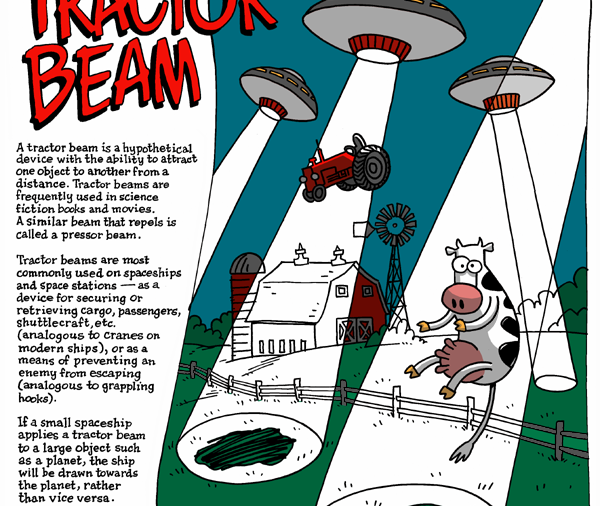The release of the new Star Wars film is almost upon us, marking nearly 40 years since the UK’s first screening of the original. Understandably, a great furore surrounds this latest instalment; however, the recent development of a fantasised technology from the first film is also cause for excitement. In Episode IV the Death Star traps the Millennium Falcon, using a tractor beam to draw Han and the crew into the clutches of the empire. Now, thanks to a collaboration of scientists, tractor beam technology has been turned from fantasy to reality. This combined effort, involving scientists from the UK and Spain, has seen the development of a real life sonic tractor beam, capable of suspending and moving objects.
The tractor beam – a product of researchers from the University of Bristol, the University of Sussex and the Public University of Navarre in Spain – uses sound waves projected from speakers to suspend, rotate and control small items. Consequently the technology, described in a study published in Nature Communications, is the first successful example of sound wave use to levitate and manipulate an object. Previous attempts have included the use of light waves; changing the temperature of air around an object, altering the surrounding pressure, thus allowing for its suspension in the air. However, this field of research has had limited success.
The current breakthrough involves the use of high-pitched and high-intensity sound waves which, when pointed at a specific point, create an acoustic hologram. Unlike visual holograms, which rely on light waves to create a 3D hologram, an acoustic hologram relies on sound waves, producing a 3D form that is invisible to the naked eye. In this case, the acoustic hologram was created using a grid of 64 miniature loudspeakers, directed at a polystyrene ball. The sound waves used were at a frequency of 40KHz, which is audible to bats but too high for human hearing. The study found that adjustments to the properties of the sound altered the properties of the acoustic hologram, allowing for the polystyrene ball to be suspended and rotated.
Asier Marzo, the PhD student involved, described how difficult the development of this technology was, “after months of beads being spitted uncontrollably from the tractor beam we had success”. While the manipulation of a 3mm polystyrene ball seems like a relatively small breakthrough, it may well have much greater repercussions on numerous fields. It indicates an increased probability of developing a more powerful acoustic hologram – one capable of manipulating much larger objects from significantly further distances. This would be achieved by using larger speakers and lower frequencies, potentially producing a tractor beam that could accurately pick up a football from over 30ft.
Although this technology may one day be used on items the size of the Millennium Falcon, the group responsible for the discovery have other ideas concerning how the technology can aid society. As sound waves can travel through body tissues without causing harm, there are a number of medical procedures which would benefit from this research. For example, operations and microsurgeries could be performed without the need for an incision. Similarly, the sound waves could be used to manipulate objects within the human body, including blood clots and kidney stones. Furthermore, the group have suggested that their tractor beam could be used to deliver drugs to specific regions of the body. This would allow for the production of specifically designed drugs, ones which target areas where they will have the most benefit and least amount of side effects.
In addition to its application in medicine, there are suggestions that the device could be fitted to the outside of space stations. This would enable astronauts to operate specific objects in space, allowing them to perform repairs without having to leave the station. Clearly this technology is still in its infancy; however, there is now ‘a new hope’ that the tractor beams observed in the Star Wars universe are no longer light-years away.
Steven Gibney
[Image: Greg Williams, picture hosted on Wikimedia Commons]

